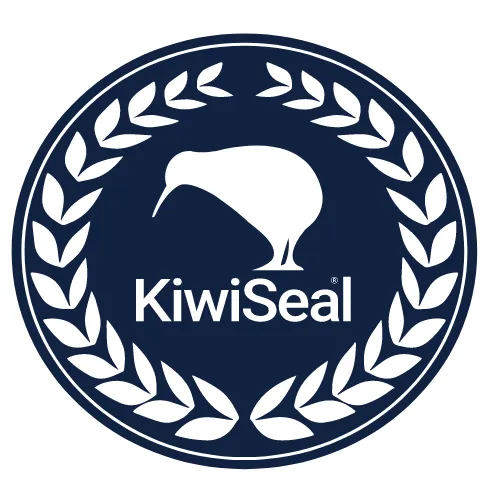Roof Waterproofing Service Guide: Protect Your Home in 2025
Roof Waterproofing Service Guide (2025): Keep Your Home Dry, Safe, and Sale-Ready
Even a small roof leak can cause thousands of dollars in damage within hours. With weather patterns becoming more unpredictable in 2025, investing in a professional roof waterproofing service is one of the smartest decisions a homeowner can make.
This guide explains why waterproofing matters, how it works, the materials professionals use, what it costs, and how to maintain your roof for long-lasting protection.

Why Roof Waterproofing Matters in 2025
Rising weather extremes increase risk
Heavy rainfall, strong winds, and shifting temperatures are becoming more frequent. Roofs endure constant exposure, and as materials age, cracks or weak points can allow moisture to seep in. Without waterproofing, leaks can spread fast—damaging insulation, ceilings, and structural framing.
The true cost of ignoring leaks
Water intrusion doesn’t just create visible stains; it often leads to hidden damage. Structural repairs can easily exceed $10,000, while mold remediation may cost between $3,000 and $6,000. A complete roof replacement can reach $25,000 or more, depending on the materials used.
By comparison, a professional roof waterproofing service typically costs between $6,000 and $12,000, making it a far more cost-effective preventive solution.
The benefits go beyond protection
Proper waterproofing can extend your roof’s lifespan by up to 20 years, stabilize indoor temperatures, and help reduce humidity and mold risks. Homes with recent waterproofing often attract more confident buyers and higher offers, since buyers value roofs that have been maintained and protected.
How Professional Roof Waterproofing Works
A roof waterproofing system forms a durable, watertight barrier that keeps moisture out while allowing your roof materials to expand and contract naturally. The success of this protection depends on material quality, precise application, and thorough surface preparation.
What a complete service include
Detailed inspection: A professional examines your roof for leaks, cracks, and weak areas, often using moisture testing tools to identify hidden damage.
Surface preparation: The roof is cleaned of debris and moss, and any damaged areas are repaired. This step ensures strong adhesion for the waterproofing system.
System selection: The contractor recommends the best solution based on roof design, slope, and environmental conditions.
Application: Waterproofing membranes or coatings are applied in multiple layers. Special attention is given to flashing, vents, and joints—common leak points.
Final checks: Adhesion and drainage are tested to confirm full coverage. A warranty and aftercare plan are provided once the job is complete.

Common Waterproofing Materials and Their Strengths
Roof waterproofing services in New Zealand commonly use several material types, each with specific advantages:
Liquid-applied membranes: These flexible coatings are ideal for roofs with irregular shapes. They cure into a single, seamless layer that resists cracking.
Sheet membranes (TPO, PVC, or bituminous): Strong and UV-resistant, these are often used on large flat or low-slope roofs.
Rubberised asphalt and reinforced films: Designed for maximum adhesion and puncture resistance, suitable for both residential and commercial properties.
Eco-friendly and low-VOC systems: For homeowners who value sustainability, modern membranes now provide excellent performance with minimal environmental impact.
When comparing materials, consider the expected lifespan (10 to 25 years on average), flexibility under changing temperatures, and UV stability to ensure long-term durability.
Kiwiseal: Advanced Waterproofing Solutions for New Zealand Homes
For homeowners looking for a trusted local provider, Kiwiseal offers advanced roof waterproofing systems designed for New Zealand’s unique climate. Their membrane solutions combine modern technology with eco-friendly materials, providing long-term performance without compromising sustainability.
Kiwiseal’s process includes thorough repairs, surface preparation, and efficient project turnaround—often at about one-third of the cost of a full reroof. Each project comes with a 10-year warranty, ensuring lasting peace of mind.
Many homeowners choose Kiwiseal for its combination of technical expertise, reliability, and proven results in preventing leaks and extending roof life.
Roof Waterproofing Costs, Savings, and ROI
Understanding the investment
On average, a professional roof waterproofing service in New Zealand costs between $60 and $120 per square metre, depending on factors such as roof size, slope, material type, and any repairs required before application.
Although this may seem like a significant upfront cost, it’s far less than the expense of repairing water damage or replacing an entire roof later on.
How waterproofing compares to reroofing
A waterproofing project generally costs about one-third of what a complete reroof would cost. For instance, restoring a medium-sized home with waterproofing may total around $9,000 to $10,000, while replacing the same roof could exceed $28,000.
In short, waterproofing preserves your existing roof, delays the need for replacement, and delivers excellent long-term value.
The financial advantages
Waterproofing reduces the risk of costly structural damage, helps lower energy bills by improving insulation, and can qualify homeowners for potential insurance benefits. When it comes time to sell, a recently waterproofed roof reassures buyers and can increase resale value.

Choosing the Right Roof Waterproofing Provider
Not all providers deliver the same level of service or expertise. To make an informed choice:
Check credentials: Ensure the company is licensed, insured, and experienced in waterproofing your specific roof type.
Request a detailed proposal: A transparent quote should include all materials, repairs, installation steps, warranty terms, and cleanup.
Ask about materials: Quality membranes and coatings should be tested, durable, and suited to New Zealand conditions.
Review warranty coverage: Look for both product and workmanship warranties of at least 10 years.
Evaluate customer support: Reliable providers offer inspection programs, maintenance advice, and prompt responses to any future concerns.
Questions to ask before hiring:
Which waterproofing system do you recommend and why?
How long is the warranty, and what does it cover?
How often should I schedule maintenance?
What early signs of wear should I watch for?
Avoid contractors who skip site visits, provide vague pricing, or use high-pressure sales tactics. Professional transparency and detailed documentation are essential.
Maintaining Your Waterproofed Roof
A waterproofed roof still requires regular care to perform at its best. Preventive maintenance can significantly extend its lifespan.
Essential maintenance tips
Inspect regularly: Check your roof at least once a year and after major weather events. Look for pooled water, cracks, or damaged flashing.
Clean debris: Remove leaves, moss, and branches that could block drainage or cause standing water.
Address small issues early: Seal minor cracks or peeling edges before they worsen.
Schedule professional maintenance: Many providers offer follow-up inspections and touch-ups that preserve warranty coverage.
Keep good records: Save invoices, inspection notes, and warranty information. These documents support insurance claims and add credibility when selling your home.
When to reapply or upgrade
Most waterproofing systems last 10 to 15 years before they need renewal. If you notice recurring leaks or brittle membrane areas, consult your contractor about reapplication or upgrading to a more advanced system.
Newer waterproofing technologies offer improved UV resistance and eco-friendly performance, providing stronger long-term protection.
Final Thoughts
In 2025, a roof waterproofing service is more than a maintenance step—it’s an investment in your home’s durability, comfort, and value. Whether you choose a trusted provider like Kiwiseal or another qualified professional, prioritizing waterproofing now can save you from significant costs later.
With proper materials, skilled installation, and routine care, you’ll keep your roof watertight, your home dry, and your peace of mind intact for years to come.






Facebook
Instagram